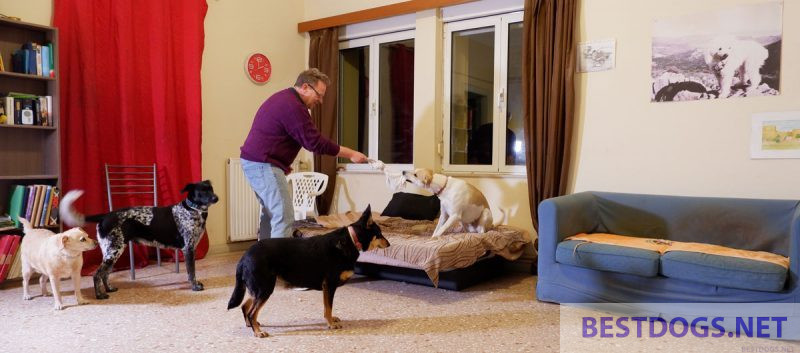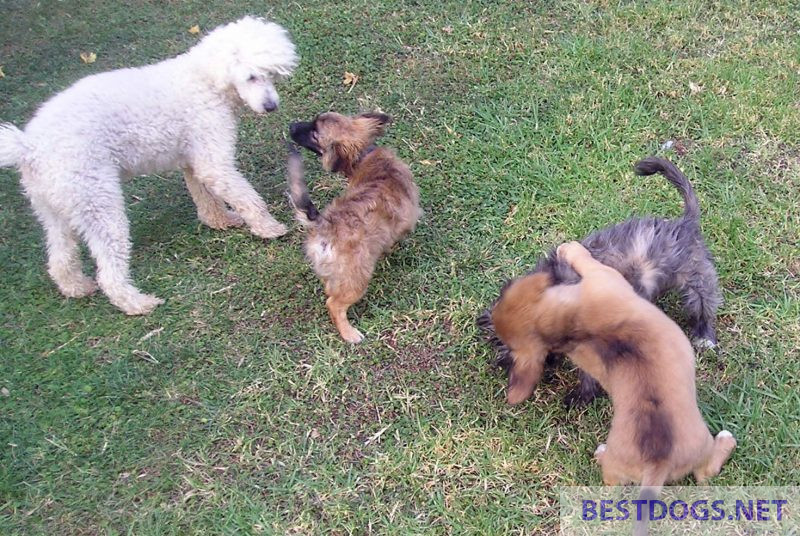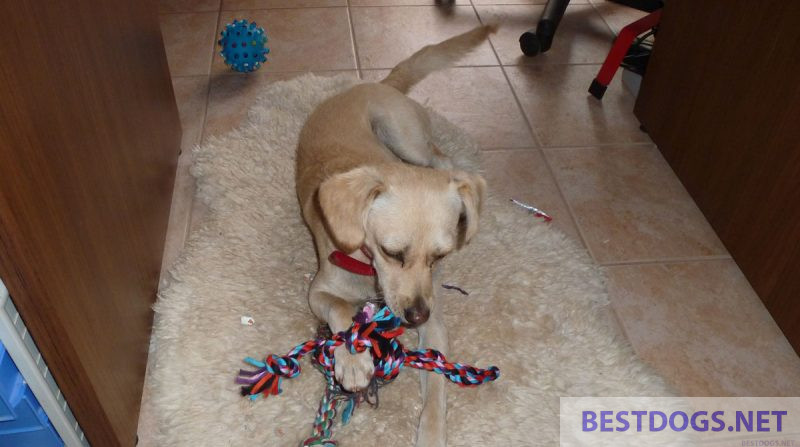Getting Dogs and Cats Used to Each Other: Harmonious Pet Introduction Strategies.
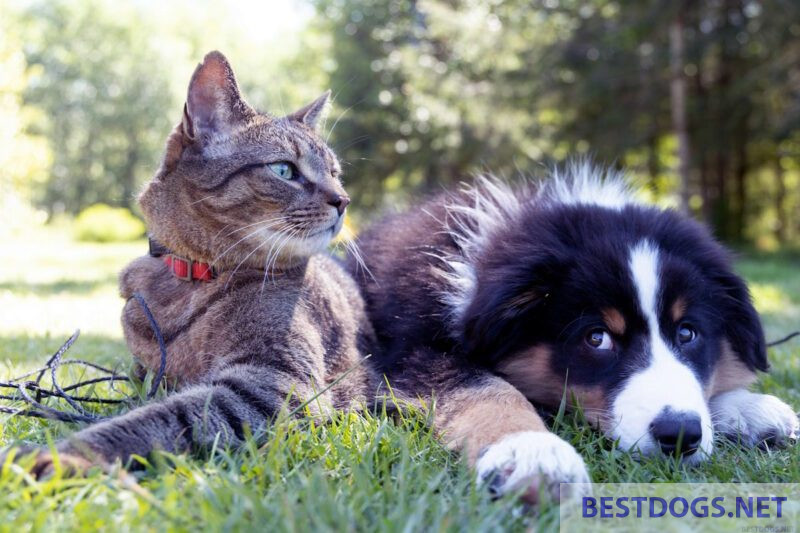
Bringing dog and cat together
Table of Contents
Introducing dogs and cats to each other in a shared living space involves understanding their distinct behaviors and needs.
While traditionally seen as natural adversaries, dogs and cats can coexist peacefully and even form close bonds under the right circumstances.
Appropriate introduction methods and understanding each animal’s social dynamics play critical roles in fostering a harmonious environment.
To facilitate a smooth integration, caregivers should be aware that both patience and careful planning are key.
Creating a positive association between the two species can begin even before they physically meet.
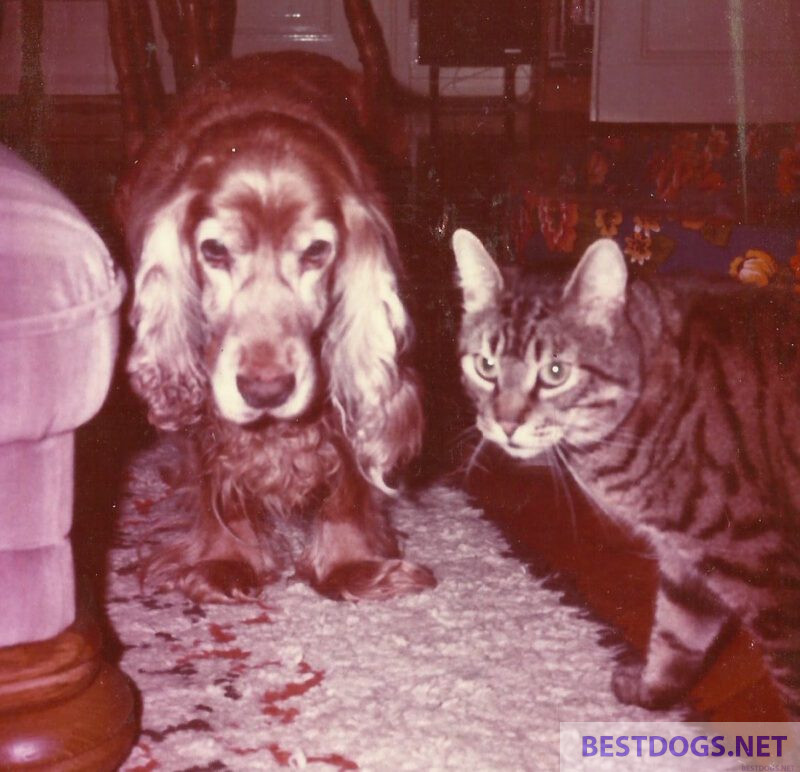
For instance, exchanging scents by using a blanket or toy helps the animals become familiar with each other’s presence without direct interaction.
This scent-swapping technique paves the way for a more relaxed first encounter.
Additionally, recognizing the importance of body language, giving both pets ample personal space, and providing rewards for calm interaction encourage a peaceful cohabitation.
Once the groundwork is laid, the physical introduction should be handled carefully.
Ensuring that the cat has escape routes and perches where it can observe the dog from a safe vantage point is important.
Similarly, training the dog to respond to commands and remain calm in the presence of the cat minimizes stress and potential conflict.
Both animals should be allowed to set their own pace for interaction, gradually increasing their exposure to one another in a controlled and safe manner.
With these thoughtful strategies, dogs and cats can adjust to sharing their home with a different species effectively and without undue stress.
Understanding Cat and Dog Behavior

Introducing dogs and cats to each other requires an understanding of their inherent behavioral differences and recognizing signs of stress or aggression.
Ensuring that interactions are characterized by calm behavior from the dog and a relaxed state for the cat is crucial.
Behavioral Differences
Cats and dogs possess distinct behavioral traits that stem from their species-specific communication methods.
Dogs are generally social animals that rely on a hierarchical structure and are keen to interpret human and animal gestures. They often approach new situations and creatures with a mix of curiosity and assertiveness.
Cats, conversely, are more territorial and independent, relying more on scent marking and less on body language cues. They require time to acclimate to changes in their environment without feeling threatened.
Signs of Stress and Aggression
Recognizing the signs of stress and aggression is essential for a peaceful introduction.
Cats may exhibit stress through behaviors such as hissing, arching their backs, or flattening their ears.
Dogs may show aggression or anxiety through growling, barking, or stiff body postures. Avoiding direct eye contact between them initially can help reduce perceived threats.
Importance of a Relaxed Cat and Calm Dog
For successful integration, cultivating a relaxed cat and calm dog environment is vital.
Acclimating pets to each other’s scent without direct interaction can lead to familiarity and reduce fear.
Introducing a new dog to a household cat’s scent using a blanket beforehand can ease subsequent face-to-face meetings.
Likewise, ensuring that the dog remains calm and controlled, possibly through obedience training, can help maintain a peaceful atmosphere conducive to positive interactions between the species.
Preparation for Introducing Pets
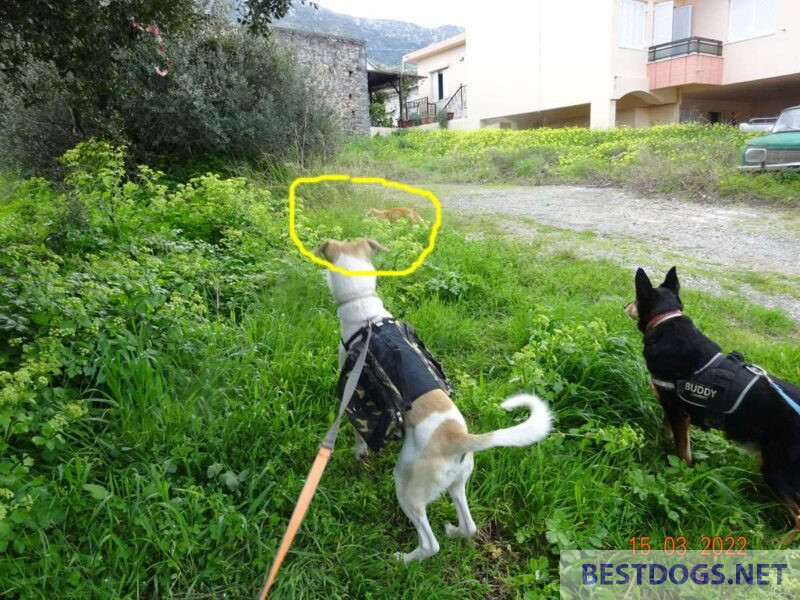
Effective preparation is crucial for a smooth introduction between dogs and cats. The focus should be on creating a safe and controlled environment to facilitate positive first interactions using barriers to separate the animals when necessary.
Preparing the Home Environment
Setting up the home before the first meeting is key.
One should designate a safe space for each pet, ensuring that the dog’s area is separate from the cat’s.
Crates and baby gates are effective in creating these safe zones.
The home should be arranged so that the pets can gradually get used to each other’s scent and presence without direct contact.
For example, feeding them on opposite sides of a closed door can help associate the smells with positive experiences like mealtime.
Choosing the Right Time for Introduction
Timing can significantly influence the success of pet introductions.
Introducing pets when the household is calm and quiet can reduce stress and external stimuli.
Avoid times of high activity or when either animal may be overly excited or hungry.
The first meeting should be brief and controlled, with the animals’ body language carefully monitored for signs of stress or aggression.
Proper Use of Barriers
Barriers such as baby gates or a closed door can provide a visual and physical boundary while still allowing the pets to acknowledge each other’s presence.
During the initial stages, one might also employ the use of crates to manage the interactions closely.
The barrier should be secure but allow for retreat if either animal feels threatened.
This method permits a gradual and controlled approach to familiarization and can be essential in preventing any unwanted conflict.
Conducting the Introduction Process
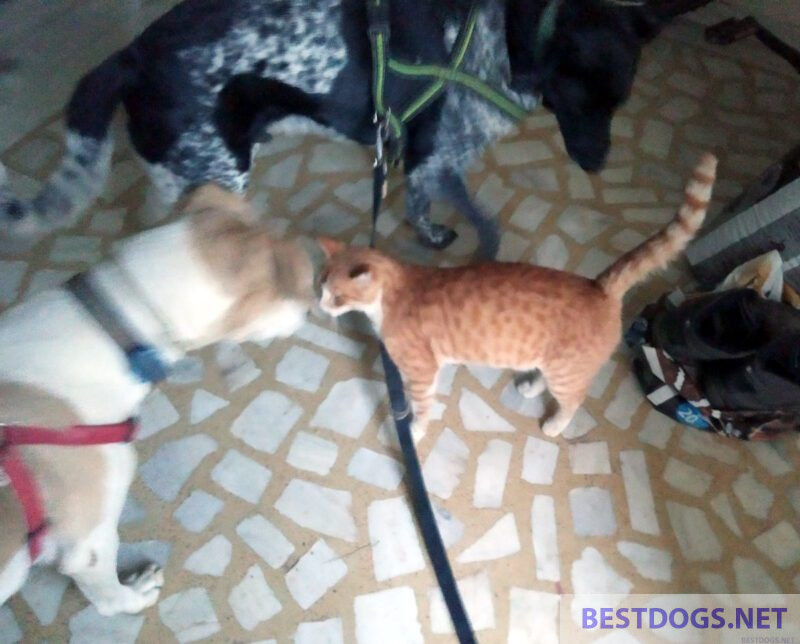
When integrating dogs and cats, the success of the introduction process hinges on careful planning and patient execution.
Recognizing the individual personalities and preferences of the pets is critical in facilitating a smooth first interaction, ensuring properly supervised meetings, and applying distraction techniques to maintain a calm environment.
The First Interaction
Initially, the dog and cat should be introduced to each other’s scent without direct contact.
An effective strategy involves swapping bedding or using scent articles to familiarize them before a physical meeting.
This initial step can set the tone for future interactions and help to mitigate anxiety or aggressive responses.
Supervised Meetings
Once the pets have been acclimated to each other’s scent, the first face-to-face meeting should be brief and highly supervised.
Keeping the dog on a leash and the cat with an accessible escape route allows both animals to feel secure.
Consistent, calm supervision is essential to intervene if either pet shows signs of distress or aggression.
Using Distraction Techniques
During initial and subsequent meetings, distraction techniques can be invaluable.
Providing favorite toys or treats can redirect potentially negative energy into positive experiences.
Reinforcing calm behavior with positive reinforcement, such as verbal praise or gentle patting, encourages a peaceful coexistence and creates positive associations with each other’s presence.
Training and Socialization Strategies
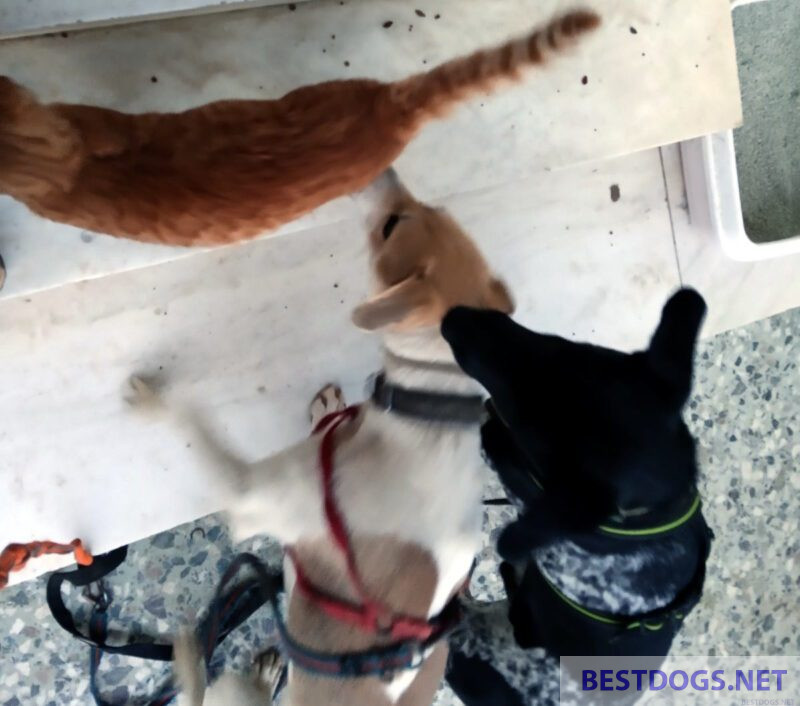
When introducing dogs and cats to each other, employing professional guidance, conducting ongoing training sessions, and understanding the dynamics of socialization in multi-pet households are crucial for a harmonious integration.
Professional Guidance
Consulting with a certified trainer or animal behaviourist can significantly improve the success of socialization.
These professionals assess individual pet temperaments and provide a tailored strategy.
For instance, the American Kennel Club (AKC) offers resources and may recommend qualified experts experienced in creating positive interactions between different species within the same household.
Ongoing Training Sessions
Structured training sessions are essential.
In these sessions:
- Consistency is key; regular, short 15-20 minute interactions can build familiarity.
- Positive reinforcement, such as treats and praise, helps both dog and cat associate each other with good experiences.
Training should include controlled meet-and-greet scenarios, always allowing escape routes to prevent any animal from feeling cornered.
The goal is a gradual but steady progress towards relaxed coexistence.
Socialization in Multi-Pet Households
Successfully socializing pets in a home with multiple animals requires a strategy that respects each pet’s personality and space. This involves:
- Introducing pets in a neutral area to prevent territorial behavior.
- Monitoring interactions closely, looking for signs of stress or aggression.
- Providing each pet with their own safe space, such as separate beds and feeding areas.
A multi-pet household benefits from a slow and patient approach to socialization, ensuring each animal is comfortable and secure in the presence of the other.
Proper socialization reduces the likelihood of behavioral issues and enhances the quality of life for all pets involved.
Ensuring the Well-Being of Both Pets
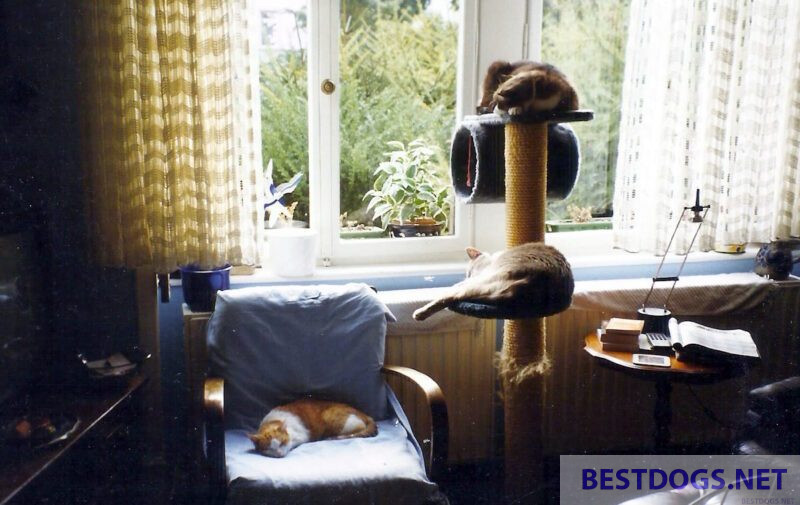
Introducing a dog and cat to each other requires careful attention to the well-being of both animals. A successful introduction sets the foundation for a peaceful coexistence, focused on meeting the specific needs and behaviors of each pet.
Long-Term Welfare Considerations
For the long-term welfare of both a dog and a cat, it is essential to consider their individual needs.
A dog requires regular exercise, consistent training, and social interaction, while a cat needs opportunities for climbing and scratching to express natural behaviors.
Providing a scratching post for the cat allows them to engage in this critical activity without damaging furniture.
Regular veterinary check-ups and preventive care are also critical to long-term health, ensuring that both pets are vaccinated, dewormed, and receive flea and tick prevention.
Maintaining Separate Safe Spaces
Safe spaces are vital when integrating a dog and cat into the same household.
Initially, pets should be separated, each having their own designated area where they can retreat and feel secure.
Cats especially can become stressed if they lack a private space.
Ensure the cat has access to a quiet room with their litter box, food, water, and a comfortable resting area.
A baby gate can be useful to maintain separation while allowing the pets to observe and sniff each other from a distance.
Over time, as they become more comfortable, they can have supervised interactions, gradually increasing until they can freely coexist.
Creating a Harmonious Relationship
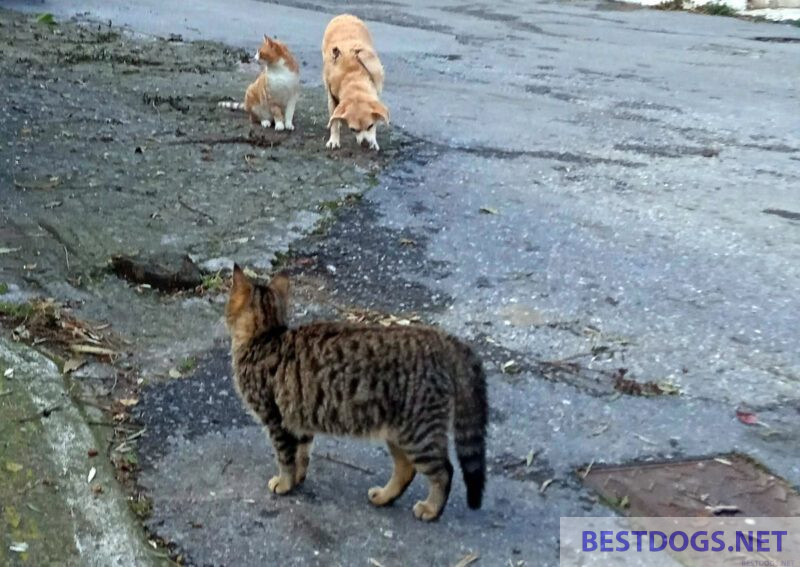
In cultivating a peaceful coexistence between dogs and cats, it’s essential to maintain patient oversight and employ strategies like positive reinforcement.
This involves consistent supervision and employing toys and play to foster positive interactions.
Continued Supervision and Intervention
One should supervise the interactions between the dog and cat, especially during their initial meetings.
It’s critical to read their body language to gauge comfort levels and intervene if signs of stress or aggression appear.
Positive reinforcement techniques, such as offering treats or praise when they exhibit calm behavior in each other’s presence, incentivize them to associate these interactions with rewards.
Enhancing Compatibility with Toys and Play
Interactive toys can be a conduit for building a relationship between a dog and cat.
One might introduce toys that encourage shared but not competitive play to avoid triggering a chase instinct.
It’s beneficial to engage them in separate play initially, and gradually introduce joint activities as they become more comfortable with one another.
Considering Breed-Specific Traits
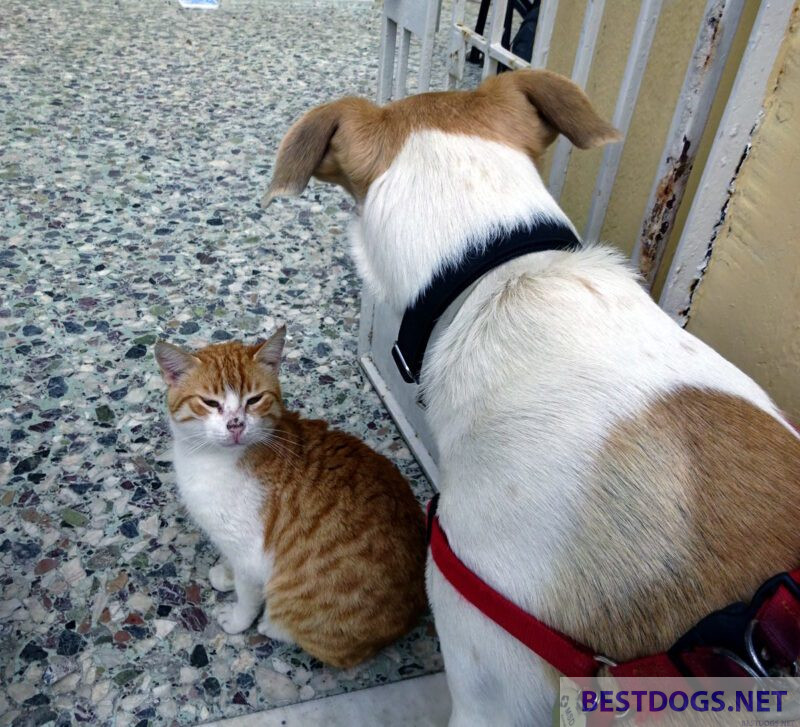
When introducing dogs and cats, considering the innate tendencies of different breeds is crucial for a smooth integration. Breed-specific traits can significantly influence how a dog might perceive and interact with a cat, affecting their cohabitation.
Understanding Breeds and Behavior
Dogs: Breeds vary in their prey drive—the instinct to chase and catch animals.
For example, hounds, which include beagles and greyhounds, typically have a high prey drive because they were bred for hunting. This instinct can cause them to chase smaller animals such as rabbits and potentially cats.
Cats: Unlike dogs, cat breeds don’t exhibit as dramatic a variation in prey drive.
However, certain breeds like the Siamese can be more active and playful, and may be more inclined to engage with a dog in a chase game, whether for play or out of fear, which could trigger a dog’s chasing instinct.
Puppies: Generally, puppies may adapt more easily to living with cats, as they can be socialized early to understand cats are not prey.
However, their breed-specific traits may emerge as they mature, so constant supervision and continued socialization are important.
When assessing compatibility, consider both the dog’s breed and the individual temperament.
Some dogs might defy breed stereotypes and have a low interest in chasing cats. On the contrary, breeds not known for high prey drive might still have individuals who display strong chasing behavior. Caution and slow, supervised introductions are key, regardless of breed.
Frequently Asked Questions

When integrating dogs and cats, it’s crucial to know the proper steps and what to expect. This section answers common questions about the process to ensure a smooth transition.
How do I introduce a new cat to my resident dog?
The introduction should be gradual. One can start by exchanging scents between both animals, using items like blankets, before a face-to-face meeting while ensuring the dog is on a leash for safety.
What age is best for introducing a kitten to a resident dog?
Introducing a kitten to a dog is often easier when the kitten is between 8 to 12 weeks old, as kittens are more adaptable at this age. However, one must ensure that the dog is well-behaved and unlikely to harm the kitten.
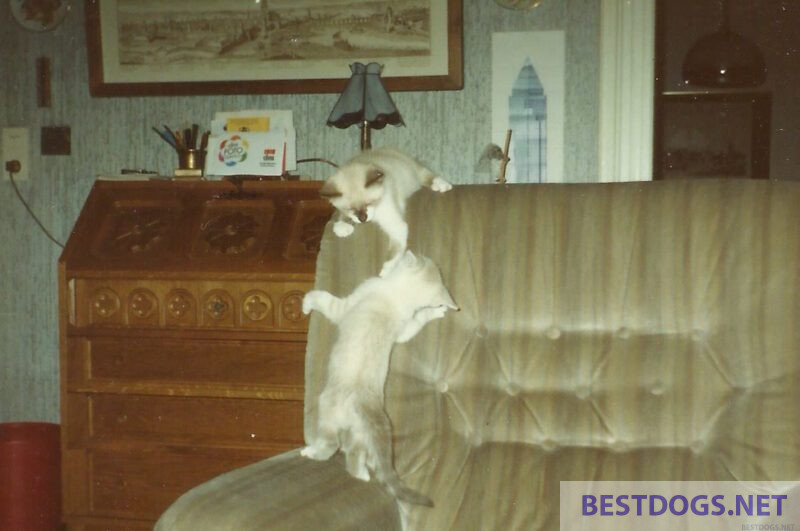
How can I tell if my dog and a new cat will be compatible before adopting?
Observe the dog’s reaction to cats during walks or visits to friends who have cats.
Seeking a meet-and-greet in a controlled environment can provide insights into their potential compatibility.
What are effective techniques to desensitize my dog to a new cat?
Effective desensitization includes controlled exposure to the cat’s scent and rewarding the dog for calm behavior.
Gradual introduction sessions with the presence of a barrier can also help.
What’s the recommended process for introducing a dog to a cat in an apartment setting?
In an apartment, create separate spaces for each pet.
Begin with scent swapping and short, supervised introductions in a neutral room, while keeping escape routes available for the cat.
How long typically does it take for cats and dogs to become accustomed to each other?
The adjustment period can range from a few weeks to several months.
One should watch for gradual improvements in their interactions. Be patient and consistent with positive reinforcement during the process.


